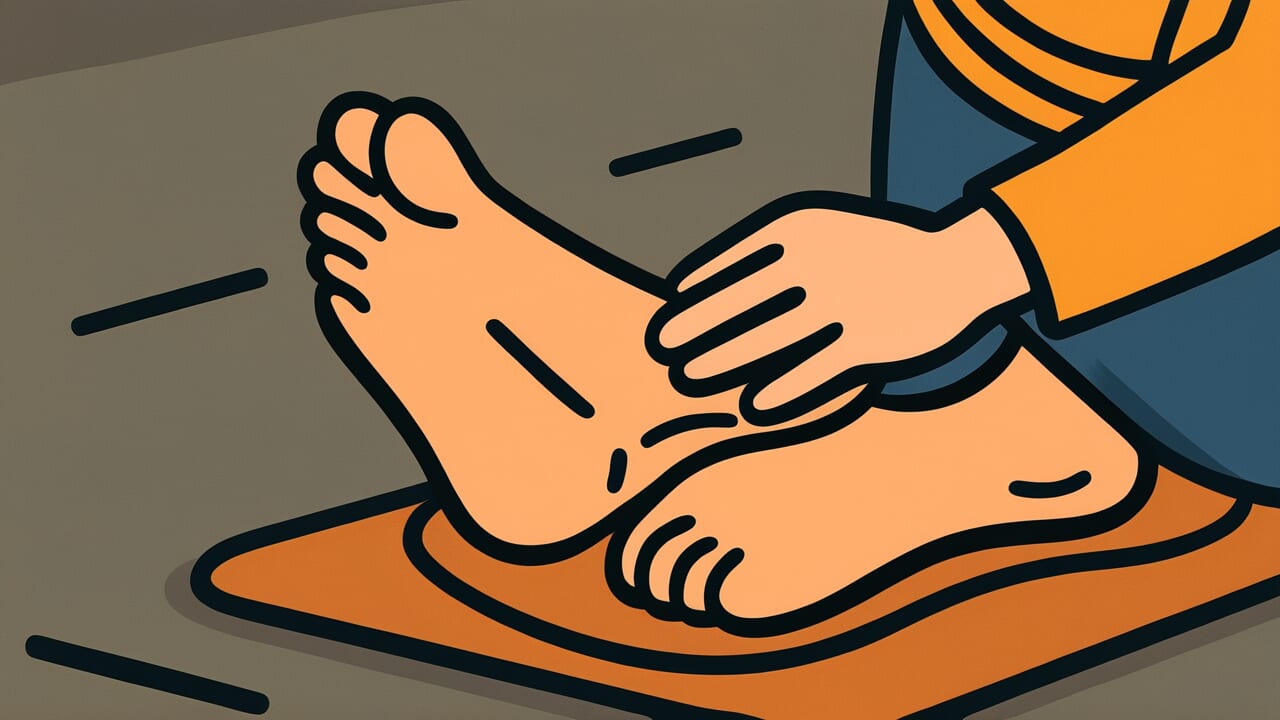How to Read “When trouble comes, one worships even the Buddha’s feet”
Koto aru toki wa hotoke no ashi wo itadaku
Meaning of “When trouble comes, one worships even the Buddha’s feet”
This proverb describes people who normally make no preparations and have no faith. But when they face trouble, they suddenly rush to Buddha for help.
The saying teaches that such last-minute responses don’t work well. Instead, it emphasizes the importance of daily preparation and the right mindset.
People use this proverb in several situations. It describes someone who ignored disaster preparation but panics after an earthquake hits.
It also applies to people who neglect their health and regret it only after getting sick. Students who study only before exams fit this pattern too.
Business people who wait until problems arise before thinking of solutions also match this description.
This expression does more than point out poor preparation. It uses the spiritual context of Buddhism to highlight human convenience and inconsistency.
Even today, people find this proverb persuasive when discussing the importance of preparing during peaceful times.
Origin and Etymology
The exact first appearance of this proverb in literature remains unclear. However, its structure suggests it came from an era when Buddhism was deeply rooted in Japan.
It likely emerged from sharp observations of both common people’s faith and human nature.
The phrase “worships even the Buddha’s feet” refers to a specific ritual. It means pressing one’s forehead to the feet of a Buddha statue.
This represents the deepest form of respect and worship. Buddhism traditionally emphasizes daily practice and devotion.
But humans tend to lose their faith during peaceful daily life. Then when illness or disaster strikes, they desperately cling to the Buddha they previously ignored.
This proverb brilliantly captures this human weakness and contradiction.
The use of “itadaku,” a humble expression, is particularly interesting. People who rush to worship do show maximum respect in that moment.
But the proverb quietly points out that this devotion is only temporary.
During the Edo period, common people who weren’t normally devout often rushed to temples and shrines when in trouble. This must have been a familiar sight.
The expression likely spread as a way to convey this essential human trait. It served as both humorous observation and gentle warning.
Usage Examples
- You never care about emergency supplies, but when an earthquake hits, you panic and buy everything like “when trouble comes, one worships even the Buddha’s feet.”
- Skipping health checkups for years, then rushing to the hospital when you feel sick—that’s exactly “when trouble comes, one worships even the Buddha’s feet.”
Universal Wisdom
This proverb has endured because it accurately captures an essential human weakness and contradiction. We all understand intellectually that “preparation prevents problems.”
But when peaceful days continue, we forget this importance.
Why do people behave this way? When no crisis looms, our brains prioritize optimistic judgments that “everything is fine now.”
Preparing means using present time and effort for an uncertain future. This goes against our instincts.
That’s why many people neglect preparation during calm times. They only take action after crisis arrives.
What makes this proverb fascinating is that it’s not mere criticism. It shows deep understanding of human nature.
The phrase “worships even the Buddha’s feet” contains the desperate feelings people have when seeking help. This isn’t something to condemn—it’s a weakness we all share.
Our ancestors understood this human nature. That’s why they taught the importance of daily preparation.
No one is perfect. Because we’re weak, we need the wisdom to know ourselves and prepare during peaceful times.
This deep understanding of humanity is embedded in these words.
When AI Hears This
Humans perceive completely different value in the same action depending on when they do it. Behavioral economics experiments show interesting results.
When comparing 10,000 yen today versus 10,000 yen in one year, most people won’t wait even for 15,000 yen a year later.
This means they discount future value by over 30 percent. This is called hyperbolic discounting.
What makes this proverb interesting is how it captures the moment when this discount rate reverses during crisis.
In normal times, “daily worship brings future blessings” feels almost worthless. Tomorrow’s fun or today’s free time seems far more attractive.
But when facing illness or disaster, loss aversion bias kicks in powerfully. Humans feel the pain of loss 2 to 2.5 times more strongly than the joy of gain.
So to protect what they’re about to lose, the value of the same action skyrockets.
The act of “praying to Buddha” doesn’t change. Yet it goes from zero value in peaceful times to value 100 during crisis.
This proverb recognized centuries ago how human decision-making swings irrationally based on time and emotional state.
Lessons for Today
This proverb teaches modern people the importance of recognizing our essential human weakness. You and I are creatures who think “it’s still okay” during peaceful days.
Acknowledging this is actually the first step toward preparation.
In modern society, what we need to prepare for has diversified. Natural disasters require preparation, of course.
But so do health management, skill development, building relationships, and financial savings. We tend to postpone all of these during calm times.
Yet when crisis comes, panic doesn’t help.
So what should we do? You don’t need to aim for perfection. Small steps are enough.
Buy one emergency supply item. Schedule a health checkup. Start learning something new.
Begin such small actions today, right now.
What matters is changing your thinking. Don’t wait until “trouble comes” to act. Move now, precisely because nothing is wrong yet.
Your future self will definitely thank your present self for today’s small preparations. For that day, why not start one thing you can do now?



Comments